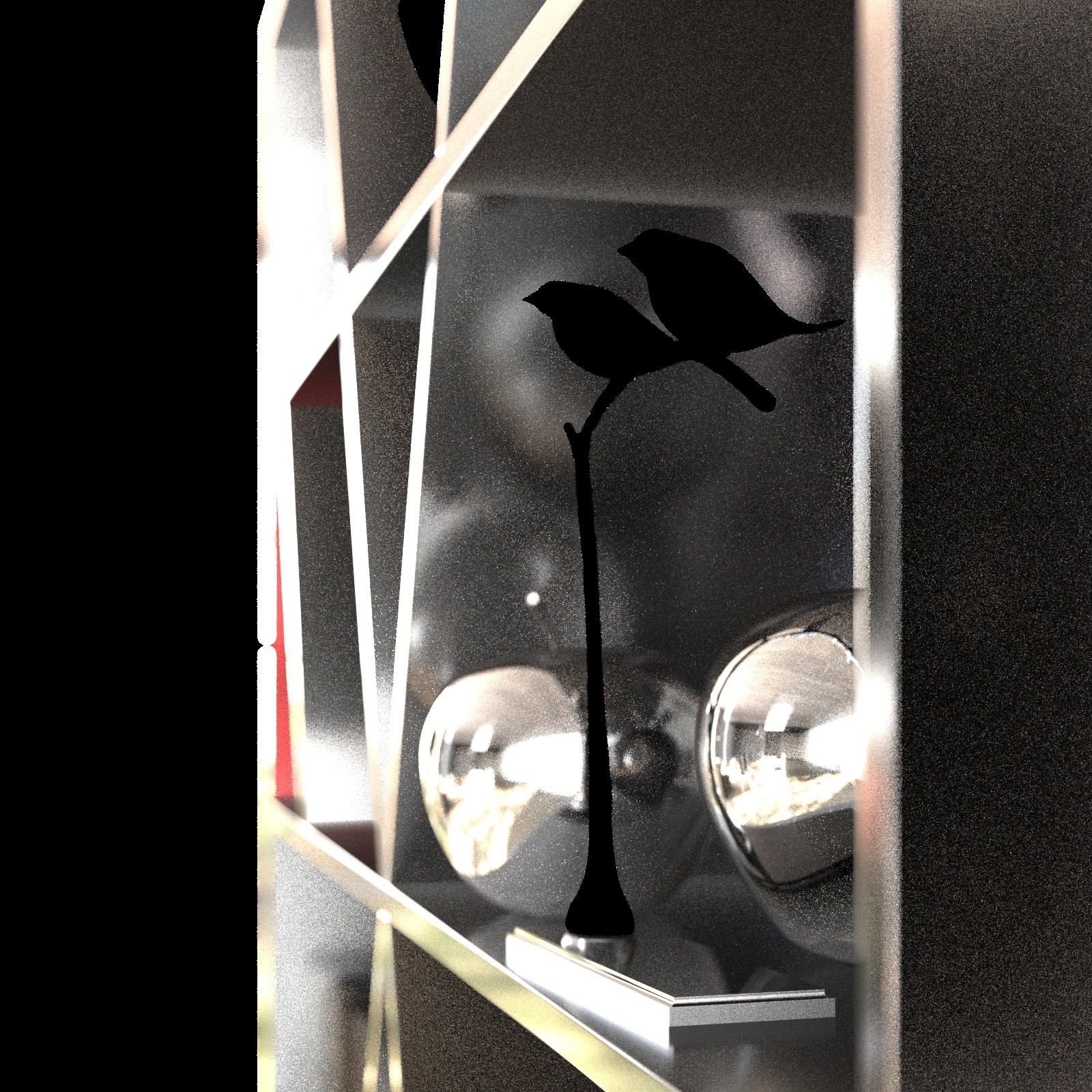This page provides information about the Raw Coat Reflection Render Channel in V-Ray for Blender.
Overview
The Raw Coat Reflection Render Channel is analogous to the Raw Reflection Render Channel; the main difference is that all Coat render channels can be subtracted from the main back-to-beauty composite, graded, and added back in.
The Raw Coat Reflection Render Channel stores reflection information calculated from the materials' reflection values in the scene. Surfaces with no reflection values set in their materials contain no information in the render channel, which means these areas render black. When the Raw Coat Reflection Render channel is multiplied by the Coat Filter, the Coat Render Channel is produced.
The Raw Coat render channel gives the full reflection of objects reflecting in the scene, while the Coat Filter sets how much of that reflection should come through in the composite. In other words, the filter defines the strength of the reflection, while the raw image defines what is being reflected in the image. When these two channels are multiplied, the true level of reflection is given as the Coat Render channel. Using these component parts of the reflection, you can fine-tune the reflection in your final composite.
UI Path: ||V-Ray Node Editor|| > World > Render Channels > Raw > V-Ray Raw Coat Reflection

Properties
See the Render Channels page to find out where you can find these properties.
Channel Name – Customizable name for the render channel.
Enable Deep Output – Specifies whether to include this render channel in deep images.
Color Mapping –
Consider For Anti-Aliasing – When enabled, anti-aliasing is used where possible.
Filtering – Applies an image filter to this channel.
Derive Raw Channels – Generates data in the raw channels by combining the respective color and the filter color channels.
Vfb Color Corrections – Applies the post-render color adjustments made from the VFB.
Denoise – Enables the render channel's denoising, provided the Denoiser is enabled.


